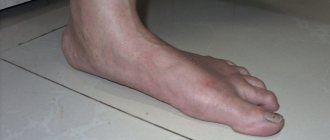Introduction
Autism spectrum disorders (ASD) are a group of different conditions.
They are characterized by certain difficulties with social interaction and communication. Other features include atypical patterns of action and behavior, such as difficulty moving from one activity to another, focusing on details, and unusual reactions to sensations. The abilities and needs of people with autism vary and may change over time. Some people with autism are able to live independently and productively, while others are severely impaired and require lifelong care and support. Autism often affects educational and employment opportunities. In addition, families providing care and support often have a difficult time. Community attitudes and the level of support provided by local and national authorities are important factors in determining the quality of life of people with autism.
Signs of autism can be identified in early childhood, but the condition is often diagnosed at much later stages.
Autism is often accompanied by other disorders, including epilepsy, depression, anxiety and attention-deficit hyperactive disorder, as well as disruptive behavior. People with autism often have co-occurring conditions, including epilepsy, depression, anxiety and attention deficit hyperactivity disorder, as well as sleep disorders and disruptive behaviors such as self-harm. The intellectual abilities of people with autism vary widely, from severe disabilities to high levels of intelligence.
Symptoms of autism can be divided into three groups
Violation in the sphere of social interaction:
- lack of interest in other people
- lack of desire to participate in any activity
- low level of interest
- lack of copying skill as a way to inherit the behavior of significant adults
- the child may not notice the absence or presence of parents
- lack of response when addressed by name
- lack of desire and interest in any games based on interaction
- showing resistance when hugging
- communication disorders
- avoiding eye-to-eye contact
- echolalia - automatic repetition of any words without addressing anyone
- may have a rich vocabulary, but do not use it when communicating and communicating
Communication impairment:
- autism is characterized by stereotypical and limited behavior and reactions
- monotony of games and interests
- the presence of obsessive movements
“The only predictable feature of autism is unpredictability; the only consistent feature is inconsistency.”
Manifestation of violations of actions:
- prolonged viewing of an object in space
- swaying in place, running in a circle, spinning around its axis
- lack of plot in interaction games
- desire to eat inedible
- tiptoeing
- impaired fine motor skills, difficulty holding objects
- increased salivation due to severe muscle hypertonicity
- rejection of the new and unfamiliar
- aversion to touching, hugging
- self-harm
- no sense of danger
- sleep disturbance
- peculiarities of eating behavior, strong attachment to a certain set of foods
Causes
Based on available scientific evidence, there may be many factors that increase a child's likelihood of developing ASD, including environmental and genetic factors.
Available epidemiological data clearly indicate that there is no causal relationship between autism spectrum disorders and the measles, mumps and rubella vaccine. Previous studies suggesting such a causal relationship were found to have methodological flaws (2)(3).
Likewise, there is no evidence to suggest that any childhood vaccine increases the risk of autism spectrum disorder. Reviews of the evidence on the potential association between the preservative thiomersal and aluminum adjuvants contained in inactivated vaccines and the risk of ASD strongly suggest that vaccines do not increase the risk of ASD.
Patient assessment and management
A range of interventions, beginning in early childhood and throughout life, can promote optimal development, well-being and quality of life for people with autism. Timely, evidence-based psychosocial interventions early in life can improve the ability of children with autism to communicate and interact effectively with others. It is recommended that children's development be monitored as part of routine maternal and child health care.
It is important that children, adolescents and adults diagnosed with autism and their carers have access to relevant information, referrals and practical support that is tailored to their individual, evolving needs and preferences.
The health care needs of people with autism are complex and require comprehensive services, including health promotion, care and rehabilitation services. In this regard, cooperation with other sectors, in particular with the education system, employment and social sector, is important.
Interventions for people with autism and other developmental disabilities must be planned and implemented with the participation of the people affected. Care for people with autism must be supported by action at local and community levels to make physical and social environments and relationships more accessible, inclusive and supportive.
Escape from the verbal jungle
Terminological disputes are a consequence of poor knowledge of the causes of diseases that manifest themselves in the triad characteristic of RDA. This is directly reflected in the classifications, because their final form depends on what principle the compilers used as the basis for dividing diseases into groups and subgroups. Despite the fact that ICD-11 clearly suggests that autism and ASD should be considered one and the same, in practice, in order to select diagnostic, treatment and correction algorithms, it is not always enough to assess only the level of intelligence and speech development, because these symptoms are only an indicator of the functional maturity of the brain. But classifiers do not remain unchanged. If the medical community decides that the new classification is not good enough, changes may be made.
For patients and their parents, it is not so much the name of the condition that is important, but rather early diagnosis, a comprehensive assessment of the child’s health, and selection of the most effective therapy and rehabilitation activities. There are no universal schemes for diseases in which the triad characteristic of childhood autism manifests itself; only an individual approach and active joint work of doctors, teachers and parents help. Perhaps the compilers of ICD-11 are right: in early diagnosis it is difficult to unambiguously differentiate various conditions that resemble RDA. It is almost impossible to provide assistance without an established diagnosis within the framework of evidence-based medicine, and the earlier the child begins to receive therapy, the better the prognosis.
Human rights
All people, including those with autism, have the right to the highest attainable standard of physical and mental health.
However, people with autism often face stigma and discrimination: their rights are unfairly denied in health care and education, and their opportunities to participate in society are limited.
People with autism experience the same health problems as the general population. In addition, they may have special health care needs related to ASD and other related conditions. They may be more vulnerable to chronic noncommunicable diseases due to behavioral risk factors such as physical inactivity and poor diet, and are at greater risk of violence, injury and abuse.
People with autism, like the rest of the population, need accessible health services to meet their general health needs, including promotion and prevention services, as well as treatment of acute and chronic conditions. However, compared with the general population, people with autism have higher rates of unmet health care needs. These people are more vulnerable in humanitarian emergencies. The most common problem is that health care providers do not have sufficient knowledge about autism and do not have a good understanding of the condition.
The causes of autism are considered through the prism of different theories
Biological theory
In this theory, the cause of autism is brain damage. A number of studies have shown that the brain of children with ASD has a number of structural and functional features.
Genetic theory of autism
This theory suggests that autism can occur with a fragile X chromosome, as well as with a high degree of gene mutation or gene polymorphism.
The theory of post-vaccination emergence of autism
This theory does not have much scientific evidence. Presumably, the development of autism is preceded by mercury intoxication. This hypothesis is confirmed only by the observations of parents, who trace a connection between vaccination and the manifestation of autistic characteristics of the child’s behavior.
Theory of metabolic disorders
The appearance of active behavioral traits is observed with phenylketonuria, mucopolysaccharidosis, and histedemia.
Opioid theory of autism
In this case, the appearance of autism is preceded by the ingestion of opioids, which place a huge burden on the human nervous system.
WHO Resolution on Autism Spectrum Disorders (WHA67.8)
In May 2014, the 67th World Health Assembly adopted a resolution on “Comprehensive and concerted efforts for the management of autism spectrum disorders”, which was supported by 60 countries.
This resolution calls on WHO to work with Member States and partner agencies to strengthen national capacity to address issues related to ASD and other developmental disabilities.
- World Health Assembly resolution WHA67.8: Comprehensive and concerted efforts to manage autism spectrum disorders
Signs of autism in a child
- At the age of 12-18 months, you should pay attention if there is no eye contact with the child (that is, he looks into someone’s eyes, but only briefly, briefly), if he does not smile at familiar faces, does not respond to attempts to play games with him , for example, when an adult covers his face with his hands and says “peek-a-boo.”
- At the age of two years, you should be wary if the child does not speak, does not point with a finger at what he wants, but uses his mother’s hand to do this, if the child has hysterics that you cannot explain.
- An indirect sign is that the child interacts poorly with others, does not make contact, and does not respond to his name. In this case, the baby most often plays with some objects alone, for example, builds towers from pots or arranges objects in a row by size and color.
- If you notice that a child is very attached to certain actions-rituals or only to certain foods in the diet, and if the usual regime is violated, he becomes hysterical. These manifestations become especially noticeable by the age of 2 years and later. For example, at the playground he always goes around the swing first, and when you try to lead him straight to the sandbox, or even change the playground, he starts crying.
- If a child constantly performs some action, he constantly sways, spins in one place, makes incomprehensible movements with his fingers.
If you notice something similar in a child, do not rush to conclusions, make an appointment with a psychiatrist.
The most common screening tool used to detect early signs of developmental autism spectrum disorder is the CHAT or M-CHAT. This is a very simple questionnaire that parents fill out themselves and takes 3-5 minutes to complete. Based on the parents' responses, a preliminary diagnosis is made - whether there are signs of autism or not. This instrument has very high sensitivity; it registers the alarming symptoms on the basis of which a diagnosis of autism is made quite well.
If the “red flags” of autism are identified by both parents and a neurologist or psychiatrist, then more specific tools for psychological and medical examination of the child, conducted by specialists, are then used.
When making a clear clinical diagnosis, the diagnostic examination scale for autism “ADOS 2”, which is the international “gold standard” for test diagnosis of autism spectrum disorders, will help:
WHO activities
WHO and its partners recognize the need to strengthen countries' capacity to promote optimal health and well-being for all people with autism.
WHO is making efforts to
- encourage governments to take targeted action to improve the quality of life of people with autism;
- provide advice on policies and action plans to address autism in the broader context of physical and mental health and disability services;
- help improve the capacity of health care providers and providers to provide appropriate and effective care for people with autism; And
- promote the creation of favorable conditions for the lives of people with autism and other developmental disorders and for their participation in society.








